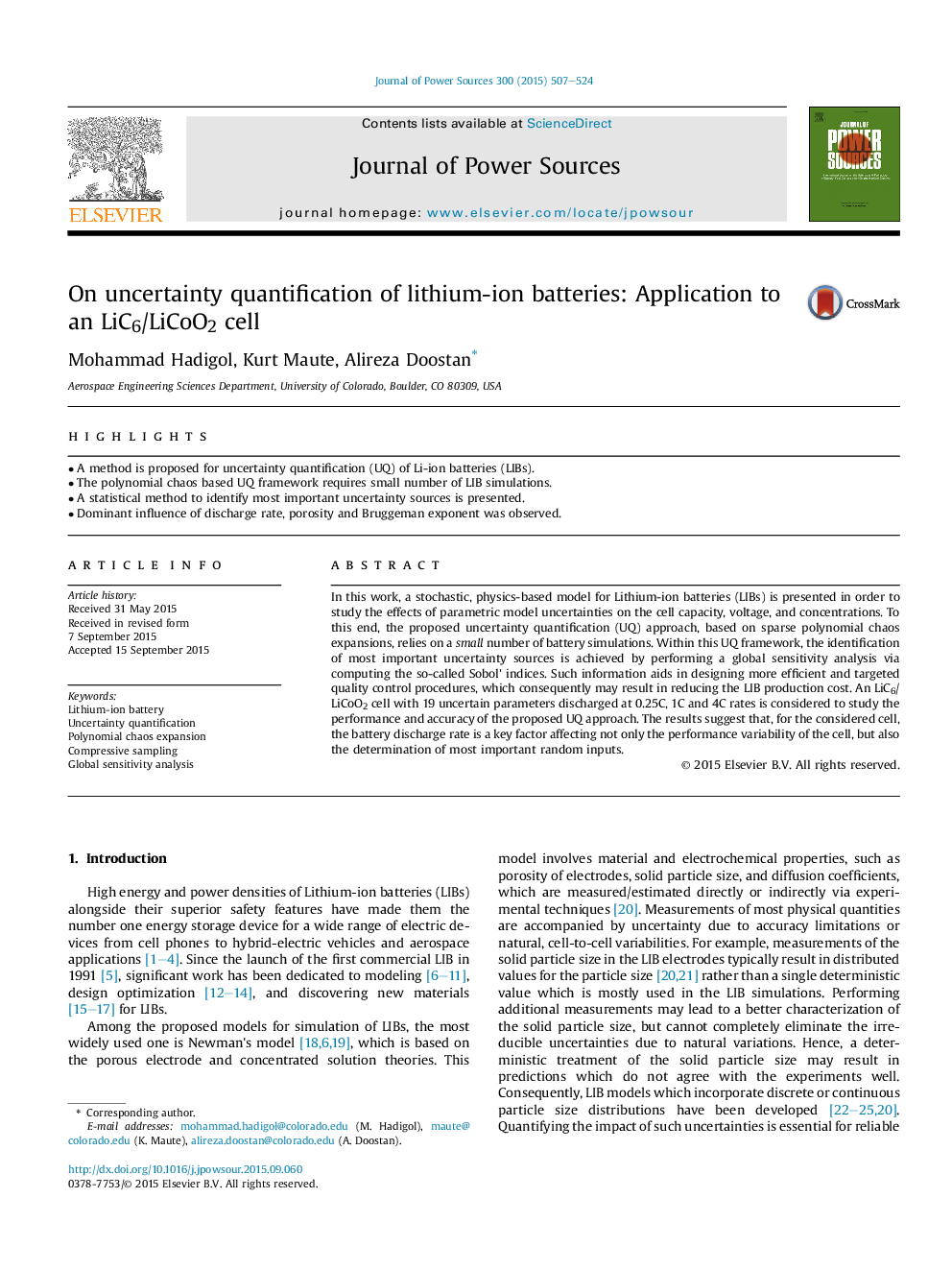| Article ID | Journal | Published Year | Pages | File Type |
|---|---|---|---|---|
| 1285807 | Journal of Power Sources | 2015 | 18 Pages |
•A method is proposed for uncertainty quantification (UQ) of Li-ion batteries (LIBs).•The polynomial chaos based UQ framework requires small number of LIB simulations.•A statistical method to identify most important uncertainty sources is presented.•Dominant influence of discharge rate, porosity and Bruggeman exponent was observed.
In this work, a stochastic, physics-based model for Lithium-ion batteries (LIBs) is presented in order to study the effects of parametric model uncertainties on the cell capacity, voltage, and concentrations. To this end, the proposed uncertainty quantification (UQ) approach, based on sparse polynomial chaos expansions, relies on a small number of battery simulations. Within this UQ framework, the identification of most important uncertainty sources is achieved by performing a global sensitivity analysis via computing the so-called Sobol' indices. Such information aids in designing more efficient and targeted quality control procedures, which consequently may result in reducing the LIB production cost. An LiC6/LiCoO2 cell with 19 uncertain parameters discharged at 0.25C, 1C and 4C rates is considered to study the performance and accuracy of the proposed UQ approach. The results suggest that, for the considered cell, the battery discharge rate is a key factor affecting not only the performance variability of the cell, but also the determination of most important random inputs.
